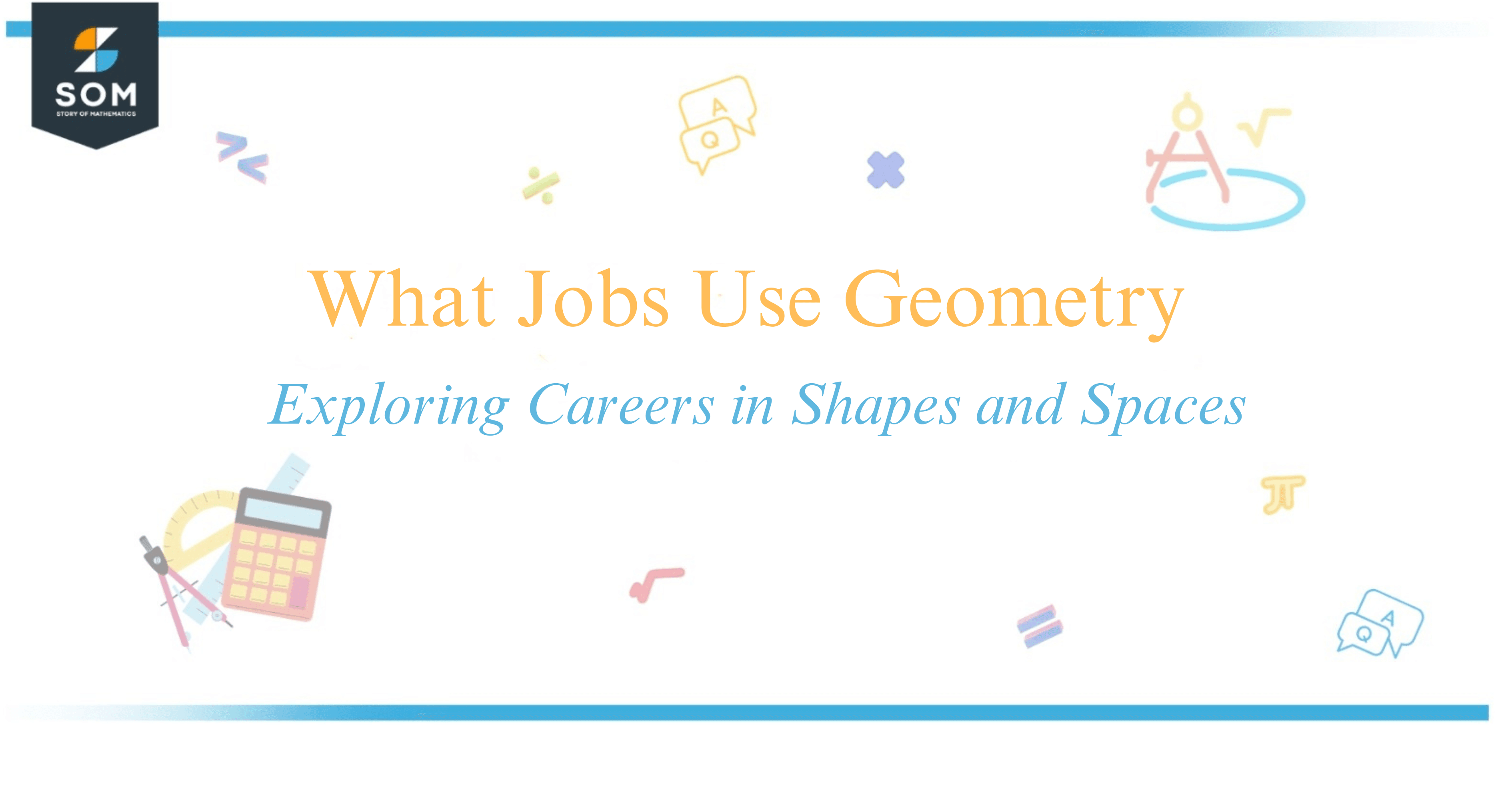
Geometry is an essential aspect of many careers, encompassing a range of skills needed for various professional paths.
In my experience, a solid understanding of geometric principles is particularly valuable in fields that require spatial understanding and design capabilities.
For instance, construction workers rely on geometry to accurately build structures, ensuring they are both functional and safe.
Similarly, in educational settings, mathematics teachers employ geometric concepts to help students understand the world around them, a topic that spans from elementary school to university curricula.

Beyond these roles, careers in research and problem-solving often incorporate geometric knowledge.
Advanced mathematics researchers, for example, delve into complex geometric theories that can lead to innovative solutions across sectors including technology, engineering, and even finance.
For anyone with a knack for math and an interest in shapes and spatial relationships, the road to a successful career may be plotted with geometric diagrams and theorems.
My journey has taught me that the practical applications of geometry are manifold, and its impact on daily life and various job functions is profound. Stay tuned, and I’ll guide you through some of the most intriguing career options where geometry takes center stage.
Applications of Geometry in Various Jobs
In the field of architecture, I find that geometry is essential for designing buildings and structures.

It ensures stability, facilitates planning, and is critical for the construction of complex forms like bridges. For instance, calculating load-bearing structures requires a deep understanding of geometric principles.
As an interior designer, employing geometry helps me to optimize spaces, create aesthetic harmony, and utilize scale and color effectively. It is particularly useful when envisioning the layout and flow of a room.
In the world of fashion design, geometry informs the cutting and assembly of clothes. Understanding shapes influences how garments fit and move with the body. Angles and symmetry play a significant role in crafting designs that are both functional and stylish.
When I turn my attention to animation, I notice the application of geometry in creating realistic movements and proportions within a digital space. This often involves a blend of geometry, algebra, and trigonometry.
Professionals such as engineers rely on geometry for various applications. Structural engineers, in particular, need geometry to ensure the safety and efficiency of their projects. Calculating force distributions and material stresses involves understanding complex geometric shapes and formulas.
Astronomers and medical scientists use geometry to interpret data, such as in medical imaging where it is crucial for diagnosing patients.
Robotics engineers use geometry to articulate the movements of robots, often expressing these through mathematical expressions involving angles and arcs.
Additionally, in the technology sector, computer programmers and software developers use geometry combined with other mathematical disciplines, such as algebra and statistics, to solve problems, develop algorithms, and process data in fields ranging from video game development to artificial intelligence.
Here’s a brief outline of how geometry integrates into various job roles:
| Job Role | Application of Geometry |
|---|---|
| Architect | Design, planning, structural stability |
| Interior Designer | Spatial optimization, layout, color theory |
| Fashion Designer | Pattern making, fitting, symmetry |
| Animator | Motion paths, proportion, 3D modeling |
| Engineer | Force distribution, material stress analysis |
| Medical Scientist | Medical imaging, data interpretation |
| Software Developer | Algorithms, data processing, computer graphics |
Career Development and Educational Paths
In my journey exploring careers involving geometry, I’ve discovered that your educational trajectory largely depends on the specific job you’re aiming for.

For someone with aspirations to become a mathematics teacher, pursuing a degree in mathematics is essential. Teaching requires not just expertise in mathematical concepts but also strong communication skills to facilitate student learning.
Research roles, such as data analyst or data scientist, often require at least an undergraduate degree in a relevant field.
A master’s level education could be necessary for more specialized positions, paired with skills in computer software, analytical reasoning, and problem-solving.
If you’re intrigued by finance, a financial analyst or actuary position might pique your interest. These jobs require a robust mathematics background, expertise in critical thinking, and the ability to translate complex data into actionable insights.
Various certifications and continuous learning via reviews and educational updates often form part of career development in these fields.
For those inclined towards creative applications, game developers need a strong foundation in geometry to bring virtual worlds to life. This may require not only a degree but also experience from boot camps or self-driven projects.
Below is a short table summarizing the educational paths for different geometry-related careers:
| Career | Educational Requirement | Skills Needed |
|---|---|---|
| Mathematics Teacher | Bachelor’s in Mathematics/Education | Communication, Teaching |
| Data Analyst/Scientist | Bachelor’s or Master’s in a relevant field | Computer Proficiency, Analytical Reasoning |
| Financial Analyst | Bachelor’s in Finance/Mathematics | Analytical, Critical Thinking, Communication |
| Actuary | Bachelor’s in Mathematics/Actuarial Science | Analytical, Problem-solving, Leadership |
| Game Developer | Degree in Computer Science/Game Design | Computer Software Knowledge, Creativity |
In the process of growing professionally within these roles, one inevitably encounters opportunities for obtaining higher salaries and leadership positions, given the right combination of experience and ongoing education.
Conclusion
In my exploration of careers, I’ve identified that various professions incorporate geometry in interesting ways.
Mathematics teachers, for example, are charged with imparting geometric knowledge to students across different educational stages. They wield geometry as a fundamental teaching subject.
In the realm of engineering, geometry serves as a cornerstone for innovation and practical application.
Engineers rely on geometric principles to design and create structures, machines, and systems that become integral to our daily lives. Similarly, geometry is indispensable in surveying, providing the necessary tools for accurate land measurement and mapping.
The animation and game development sectors also harness geometry to breathe life into virtual worlds. Characters and environments are constructed using geometric shapes and algorithms, showcasing the synergy between mathematical precision and creative vision.
Fashion designers apply geometry through patterns and cuts to drape fabrics in a manner that both fits the human form and pleases the aesthetic eye. Each of these roles exemplifies the pervasiveness of geometry in professional realms.
I’ve learned that geometry extends beyond theoretical constructs; it is embodied in the varied fabrics of career paths. This blend of artistry and precision across vocations highlights the versatility and vitality of geometry in the workforce.
